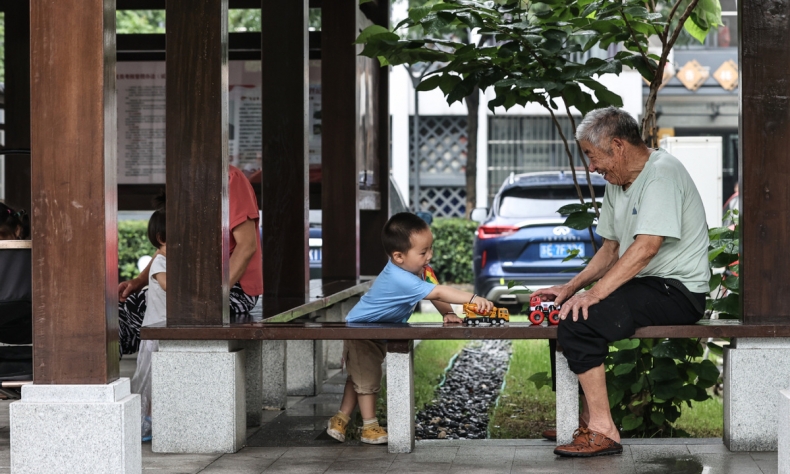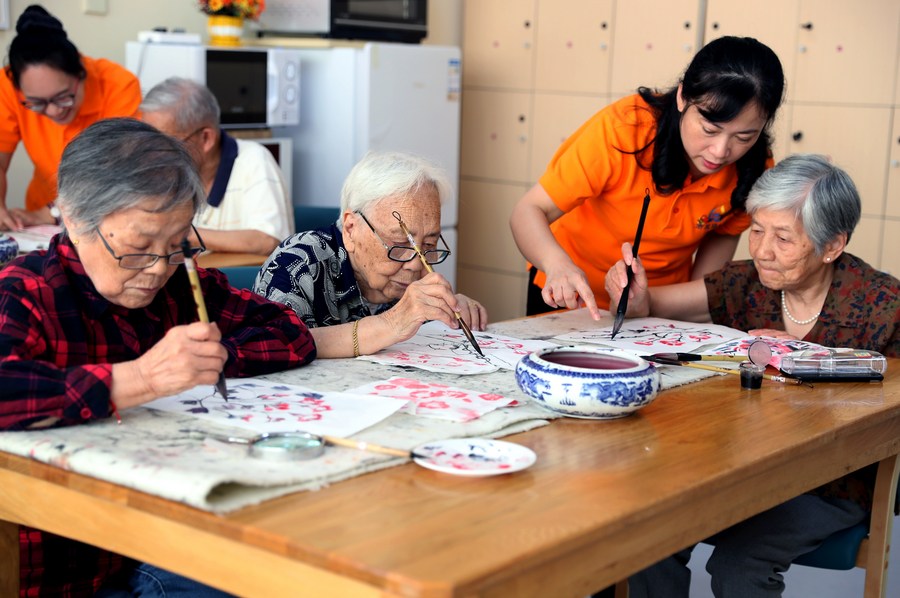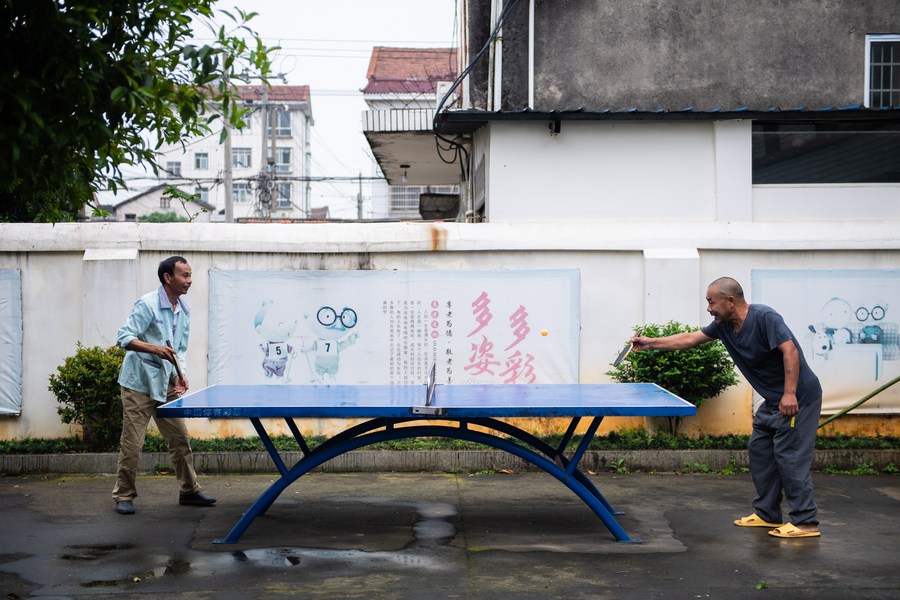What Will China’s Younger Generations Live on in Old Age?

The reform to accelerate the development of the private pension is conducive to improving the multi-layer old-age insurance system, meet people’s diversified demands in terms of senior care and deepen supply-side structural reform in the financial sector.
Retirement no longer equates with being old as many of the world’s younger generations expect to spend a prolonged period in that phase of their lives. What they aim to pursue is a more avant-garde lifestyle— “FIRE:” Financial Independence, Retire Early.
This movement popped up in China in the last decade and, admittedly, accumulating enough money at a fairly young age to see you through the next few decades and living on a passive income courtesy of a rational wealth management plan does sound enviable. Some of those whose current paychecks won’t stretch far enough are even resorting to minimalist lifestyles to ensure their FIRE dreams can come true.
But for most young people, this goal is but a dream and they will still have to stick to the conventional retirement plan. For most retirees in China, that means living on a pension. China’s pension system has three components. Pillar one is the national basic old age pension, consisting of various provincial plans and the National Council for the Social Security Fund, which currently accounts for some two thirds of the country’s total pension assets. It covers more than 1.05 billion people as of mid-November, according to the Ministry of Human Resources and Social Security (MOHRSS).
Pillar two is made up of enterprise and occupational annuities, referring to the supplementary pension insurance system voluntarily established by enterprises and their employees beyond the purchasing of a basic old-age pension, but this covers less than 10 percent of the nation’s employees. The final pillar is the private pension scheme for individuals, which is still in its infancy.
“The three-pillar pension system is an international convention to ensure financial security for people in their old age,” Dong Dengxin, Director of the Finance and Securities Institute at Wuhan University of Science and Technology, told Beijing Review. “In many other countries, the private pension has dual attributes, both as a pillar of social insurance and a part of household wealth. This is still not the case for most Chinese families.”

Up to date
At present, the pension age in China is 60 for men. For women, it is 50 for blue-collar workers and 55 for civil servants and employees of public institutions. The country has one of the youngest pension ages in the world. By comparison, Americans do not begin to receive pension benefits until the age of 62 at the earliest.
But with China’s aging population, government expenditure alone will not suffice to meet the rising need for financial support. According to the latest census, by 2021, the number of Chinese people aged 60 or above had reached 267 million, accounting for 18.9 percent of the country’s total.
Additionally, with economic imbalances between provincial-level regions, some have a pension payout surplus, whereas others with larger senior populations are in financial distress as they are unable fulfill their pension payments obligations. To ensure retirees nationwide receive their fair share, the Central Government implemented a state-level adjustable pension payment system in 2018 to relieve the burden on provinces or regions with weaker economies. This lowered the net replacement rate, defined as the individual net pension entitlement divided by net pre-retirement earnings, in some places—increasing the government’s financial burden, according to Chen Jia, an independent researcher of strategies on international issues. The enterprise and occupational annuities and private pensions are necessary here, he told Beijing Review.
“The faster China’s economy develops and the higher people’s income grows, the more important the second- and the third-pillar pension plans become as supplements of the basic old-age insurance,” Dong said. “We need to develop them to better meet people’s different needs for a better old-age life.”
Nevertheless, Dong pointed out that only employees from state departments, public institutions and some leading enterprises enjoy enterprise and occupational annuities. Moreover, as employers have contributed greatly to the first-pillar pension [16 percent of employee paychecks], which is a relatively high rate around the world, additional annuities would increase their burden and therefore restrain the growth of the second pillar, making it hard to expand related schemes in the short run, he added.
According to a 15-year blueprint unveiled in November 2020, pension reform is one of the government’s pragmatic targets through 2035 as the overall pension system needs to be able to accommodate the nation’s dramatic demographic changes.
Two years in, on November 25, China announced the implementation of its private pension plan to complete its three-pillar pension system.

The private pension scheme—government-supported, voluntary and commercially operated—has been open to citizens who currently contribute to the basic old-age pension across 36 pilot cities and regions, including Beijing, Shanghai and Guangzhou, according to the MOHRSS.
Applicants can open their pension accounts, collecting up to 12,000 yuan ($1,682) annually, which will then be deducted from their annual taxable personal income.
The actual tax burden for receiving pension benefits will be lowered from the previous 7.5 percent to 3 percent, according to guidelines released by the State Council on April 21.The policy will be applied retroactively to January 1 this year.
To be continued
“The private pension plan does not involve employers and employees can voluntarily participate,” Dong said.
“The reform to accelerate the development of the private pension is conducive to improving the multi-layer old-age insurance system, meet people’s diversified demands in terms of senior care and deepen supply-side structural reform in the financial sector,” Yuan Shuai, Deputy Secretary General of the Rural Revitalization and Construction Committee under the China Culture Administration Association, told Beijing Review.
The private pension scheme will bring huge long term investment for the capital market while a more mature capital market with increasingly improved supervision will also feed the former, eventually forming a virtuous cycle, he added.
“The favorable taxation policies also increase the private pension scheme’s appeal to middle and high income earners—and investors,” Dong noted.
He said given almost 90 percent of individual stock investors suffered losses in recent years and interest rates on savings are low, participation in the private pension scheme would be a wise choice. Long-term annualized returns would not be under 6 percent [higher than the average deposit interest rate], according to Dong, basing his estimate on the investment returns of the country’s current old-age pension funds.
Whether the private pension plan will become an attractive option for young Chinese remains to be seen. “It depends on how much the tax incentives will be and whether it will entail more diversified financial products for the old-age market,” Yuan said. “It requires financial institutions to make more efforts in terms of product supply and investment management.”
 Facebook
Facebook
 Twitter
Twitter
 Linkedin
Linkedin
 Google +
Google +










